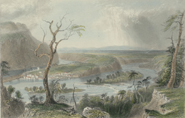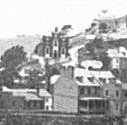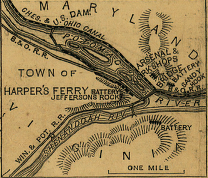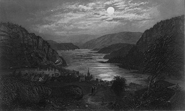This web site and related links provide archaeological and historical research concerning 18th and 19th century sites in Harpers Ferry, West Virginia, and nearby Loudoun Valley, Virginia, as well as the broader region of the upper Potomac and northern Shenandoah Valleys. The author is an anthropologist and lawyer (MA, U. Penn., 1986; JD, Georgetown, 1989; PhD, U. Va., 2003), with research interests in historical archaeology, American history, and African diaspora studies. |
 | "Harper's Ferry from the Blue Ridge," by W. H. Bartlett and G. Mills, 1839. |
 | View artists' renderings of Harpers Ferry circa 1857 and 1859, including paintings by Ferdinand Richardt and Edward Beyers. |
| Use the image to the right to see an 1861 photograph (a large file) of Harpers Ferry from the Library of Congress'American Memory archives. |  |
 | Click on the map to the left to see an 1861 Civil War map (another large file) of the Harpers Ferry region from the Library of Congress'American Memory archives. |
| A steel engraving by R. Hinshelwood based on a painting by Granville Perkins, entitled "Harper's Ferry by Moonlight," circa 1870. |  |
| Use the image to the left to see a collection of remarkable landscapes of the Great Valley of Virginia at the Valley of the Shadow project, which provides an array of archives on events and issues before, during and after the Civil War in this region. Harpers Ferry is located on the northern edge of the Great Valley. |  |